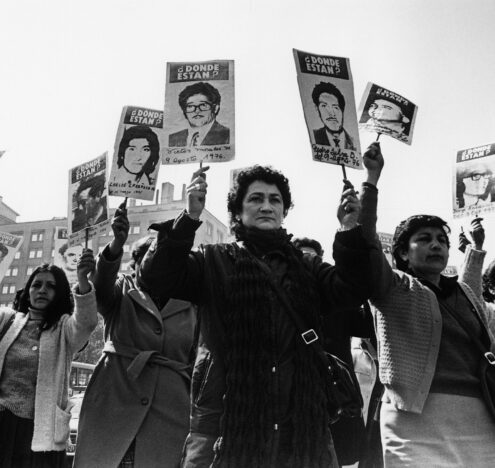When talking about policy issues, especially foreign policy issues, it can be hard to strike a balance between sounding too dry and sounding like an unhinged conspiracy theorist. Just last year, a lot of friends politely tuned out our explanation of the “dangers of heightening tensions with Iran because of a withdrawal from the JCPOA, an increasingly aggressive sanctions regime and US force posture…” We got used to people slowly backing away at parties as we talked about “the potentially dangerous implications of the administration designating the Iranian Revolutionary Guard a terrorist organization.” Then the Soleimani strike kicked off the new year, and suddenly everyone had questions. A lot of pandemic disease researchers are probably feeling the same way right now.
The problem is that waiting for a crisis often means making policy changes too late. We need the public — and thus our elected officials — to care about something before a crisis strikes. So how do we get the public to pay attention beforehand?
The best way to build consciousness and concern about an issue is through the media. Although the media definitely reacts to the news of the day, they can also push an undercovered issue into the public consciousness. One of the most vivid recent examples is John Oliver’s “Last Week Tonight” on HBO. Their segment about net neutrality led to so many public comments that the FCC’s servers crashed. But there are less dramatic examples, such as the change in Americans’ perceptions of race relations over the last decade (coinciding with increased media reporting on police killings of unarmed Black men), and the surges in donations and support given to presidential candidates who receive higher media attention (e.g., Kamala Harris’ popularity “bounce” from her quotable first debate performance).
The result of this type of public attention is that previously intractable issues can suddenly move quickly. Politicians and policymakers are influenced by a combination of structural incentives, special interests, and influence groups — but public attention is an important part of that equation. In searching for that public attention, policy advocates need to think of themselves as partners to journalists, which means it is important to know how journalists are evaluating issues.
Journalism schools teach “news values” to help journalists identify not just what is an important issue but also what makes a compelling story that will engage readers on an issue. The core news values are: immediacy, proximity, novelty, impact, and conflict. Often, they stand in contrast to tendencies that make for good policy thinking: long-term, abstraction, continuum, possibility, consensus. The trick to getting coverage is bridging those differences or finding new ways to talk about an issue — ways that may be secondary to the policy.
The first news value is the most obvious: “immediacy.” It’s the “new” in news. Journalists, and the public, like to know what’s happening right now. Wonks have to answer not just why readers should pay attention to something but also why they should pay attention to it now. This urgency is part of why a crisis draws attention to an issue. The challenge is that much of good policy work is about thinking in the “long-term,” the looming crisis on the horizon or the one in the past that was never truly resolved. Fiction is a powerful tool here because it can use story and character to make the past or future feel immediate. The same is true for a memoir or biography. These forms of compelling cultural media open up a space for journalists to revisit relevant stories. Just think about how many articles there were about radiation after HBO’s Chernobyl, even though nothing had changed.
When the Kardashians joined local activists to call for nuclear clean-up around the Santa Susana facility, nuclear waste issues were covered by publications that had never covered them before.
That zeitgeist effect, where everyone piles on to a popular story, is a big part of modern media. Something becomes the topic of the day, and then it’s open season to write about it. This is primarily a response to events, crises, or pop culture. Occasionally, a strong enough piece of journalism can create the same effect, which leads us to the other news values.
The next set of opposing values are “proximity” and “abstraction.” Policy thinking often relies on abstraction as a necessary tool to sort through complex issues and think at large scales. But in a hurried world with infinite issues and limited time, the average reader often can’t be bothered. Journalists know that one way to catch their attention is to relate the issue to their everyday life. Often, this means geographic proximity: “all news is local.” For example, news coverage around Iran reached a peak during the nationwide protests because local reporters could interview and film their readers’ friends and neighbors.
However, the idea of proximity goes beyond location. Especially now in our more nationalized media environment, showing proximity can mean creating opportunities for empathy. That’s part of why “human interest” is such a popular category of reporting. Even when it exposes a difference, it draws the reader in by also showing similarities. By showing us a bit of that person’s life so that the reader can walk in their shoes or see themselves in the subject’s thoughts and actions. In the case of the tensions with Iran, the scores of profiles that highlighted the lives of Iranian-Americans across the country were just as important as the pieces on local protests.
Of course, the news is not always about things that feel relatable. Often it is about looking for the exceptional, the weird — the “novelty.” In policy thinking, there can be less focus on these outliers and more on the “continuum:” asking what the range of policy effects is, with a focus on the average and most probable. Luckily, policymakers also like to focus on the absurdities of overlooked policies, the unintended consequences, and the illustrative outliers. These can make great stories for journalists seeking the unusual.
This novel attraction can also come from an unexpected messenger. Finding strange bedfellows who agree on one issue and nothing else is a well-worn but effective op-ed tactic. Not only does the odd pairing of authors catch the reader’s eye, it also makes their position seem more widely acceptable. Similarly, celebrity endorsements will draw people’s attention: they make people wonder why a famous person would advocate for a seemingly niche or unrelatable issue. When the Kardashians joined local activists to call for nuclear clean-up around the Santa Susana facility, nuclear waste issues were covered by publications that had never covered them before. Neither celebrities nor strange bedfellows can represent the full continuum of informed expert opinion on a subject, but for journalism they can offer the reader a thought-provoking and memorable example.
Perhaps the most natural news value for the policy community is “impact”—why is this issue important? The trick is that effects that have already happened, or are happening, tend to be more compelling than possibilities (even if the current impact is lesser than that possibility). The LA Times ran a great series last fall about the lasting effects of nuclear testing on the Marshall Islands. It was filled, not just with policy considerations, but also with the people they affect. With headlines like, “How the US betrayed the Marshall Islands, kindling the next nuclear disaster,” part of what that series did well was highlight the element of “conflict” that every journalist looks for in a story.
Conflict is a key news value. In contrast, policy work often relies on achieving consensus on an issue. While there is no need to turn every story into the airing of both sides of an argument, policy professionals should understand why journalists are looking for that sense of conflict. At the heart of any narrative structure is a challenge to be overcome, a conflict. Person-versus-person conflicts are simple and easy to come by. But there are so many more conflicts to dramatize an issue without conceding ground to an opposition or undermining consensus: the person vs. nature, vs. society, vs. self, vs. history, or vs. fate.
With these news values in mind — immediacy, proximity, novelty, impact, and conflict — experts can map out ways to get more coverage for their issues, even without the magnifying glass of crisis. But, it won’t be easy. It means not just thinking in the patterns and habits that are successful for policy, and instead sympathizing with what the media is looking for. That means not just paying attention to the persuasiveness of talking points, but also to how reportable they are. It means not just planning the logistics of an event, but also planning the story the event might tell. It means not just considering the accuracy of reports, but also what they offer a reporter to hold on to. And if we do it enough it might even mean not boring our friends when we talk about work at dinner parties.
Eva Galanes-Rosenbaum is the Director of Media & Opinion Analysis at ReThink Media where John Pope is a Communications Associate for the Peace and Security Team. They work with policy experts and activists every day to help drive attention to their issues.





















